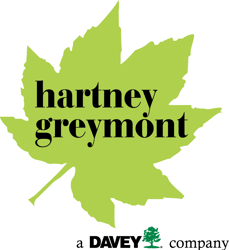When you’re thirsty, you drink water. It’s a feeling you get that you can easily satisfy.
But when your trees get thirsty in the Boston area, you can’t really hear them asking for a glass of water like your kids might do just before bedtime.
And after 2022’s historic drought where Massachusetts only received 5.74 inches of rain versus an average 13.26 inches, knowing how to water in excessive drought conditions and amid watering bans can be even more challenging.
So how can you tell if your trees aren’t getting enough water or are receiving too much?
Trees will actually share some subtle signs of overwatering and signs of underwatering. If you pay attention, they’ll reveal what they need.
Let’s look at some of these signs so you can better understand your tree’s needs and improve your watering skills.
The Warning Signs Of An Overwatered Or Underwatered Tree
Next, check your soil’s texture. If you dig 6 to 8 inches into the soil and grab a handful, it should be cool and moist. If it’s drenched, your tree is overwatered, but if it crumbles it is probably underwatered.
Signs of Overwatering a Tree
In the Boston, Massachusetts area, you’re looking for some specific overwatering tree symptoms.
Initially, you might notice that the soil around the tree is constantly wet.
Next, new growth might wither before it’s fully grown or become yellow or lime green in color with green veins.
Finally, your tree leaves that are green may be very fragile.
Signs Of Underwatering A Tree
If you’re looking for some specific underwatering tree symptoms, you might see wilted or curling leaves with brown tips. This is usually the first visual sign.
As dryness progresses, you might notice the tree’s canopy is sparse and the leaves are yellowing.
If you’re nearing autumn, you may even see leaves dropping early. In extreme cases, you may see this happen even earlier in the season.
How To Tell If Your Tree Needs More Or Less Water
You probably notice that signs of overwatering trees and signs of underwatering trees are pretty similar.
Taking a closer look may be necessary to distinguish the difference.
Start with a quick check of the soil. Take a long, flat-headed screwdriver that is at least 6 inches in length and insert it into the soil. If this task is hard to do or if the tip of the screwdriver comes out dry, your tree likely needs water.
Next, check your soil’s texture. If you dig 6 to 8 inches into the soil and grab a handful, it should be cool and moist. If it’s drenched, your tree is overwatered, but if it crumbles it is probably underwatered.
How Often Should I Water My Tree?
Trees prefer slow, deep, infrequent irrigation vs. short, frequent watering. This helps the water reach the tree roots. Mature trees, in fact, can benefit from monthly irrigation with a soaker hose where the water reaches a depth of 8 to 12 inches. Sandier soils will require more water than clay or loamy soils. It’s best to base your watering schedule off soil checks, which are likely to change since they reflect your recent weather conditions.
When watering trees, though, you always want to look at the current municipal water use restrictions in your area to ensure you’re following proper protocols, as well as the U.S. Drought Monitor.
How To Fix An Underwatered Or Overwatered Tree
How can you fix an overwatered or underwatered tree? The path to recovery starts with proper watering techniques and a tree evaluation by a certified arborist.
To understand an overwatered tree, think about the tree’s roots as being suffocated. The water is filling in all the air pockets in the soil and your tree isn’t getting enough oxygen. In addition, you’re creating a habitat for tree pathogens to develop.
If you have an overwatered tree, stop watering it for one to two weeks. Then check the soil first before watering again. Mixing compost into clay soil can improve soil drainage.
If you have an underwatered tree, you want to water it, so it gets an immediate drink by following the proper watering techniques discussed above and ensuring you follow local water use restrictions. Proper mulching can also help retain soil moisture.
In either case, inspecting your irrigation system annually can ensure it’s working properly and you aren’t needlessly underwatering or overwatering your trees.
Being overwatered or underwatered can cause stress on a tree, making it susceptible to tree pest infestations and diseases. With either scenario, it’s encouraged to have a professional tree evaluation to determine the next best steps to help your tree recover.
Where do you start when figuring out if you have an overwatered tree or underwatered tree?
You look at its leaves. They can give you a clear indication of whether your tree is out of balance where watering is concerned.
At Hartney Greymont, we have local arborists throughout Massachusetts located in Needham, Concord, Danvers, Cape Cod, and the surrounding areas.



